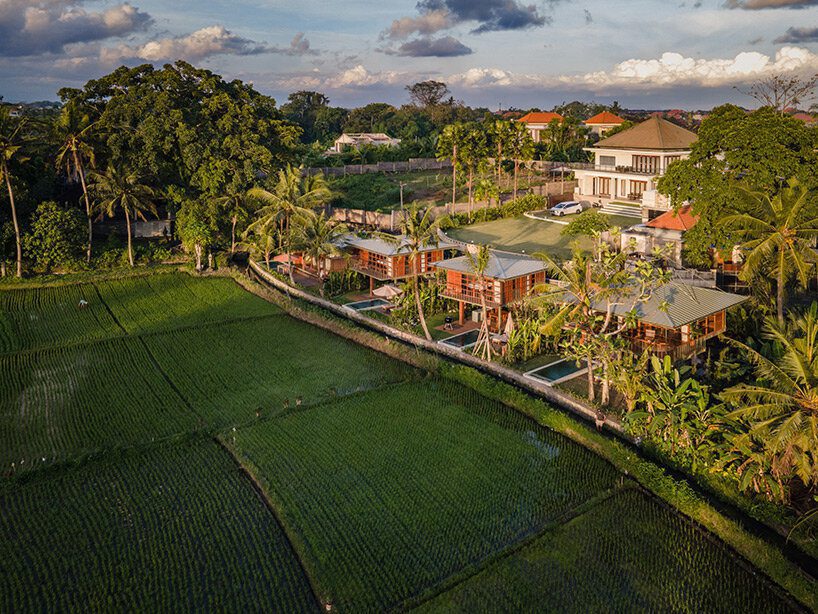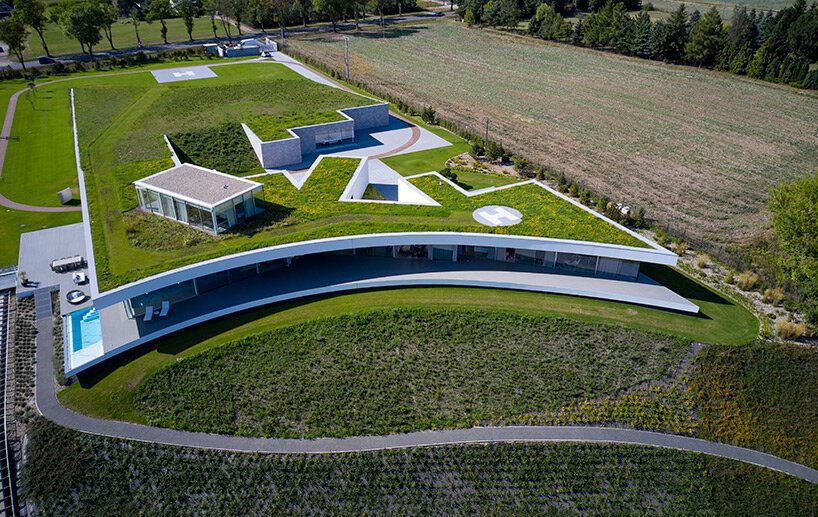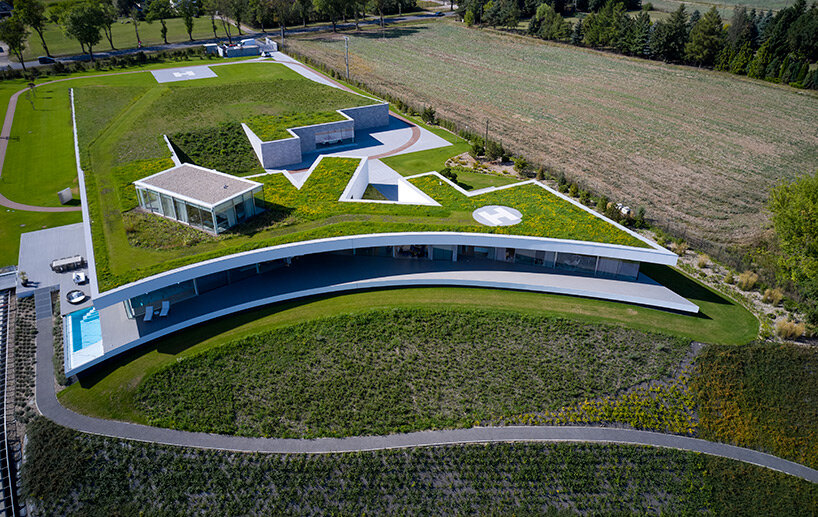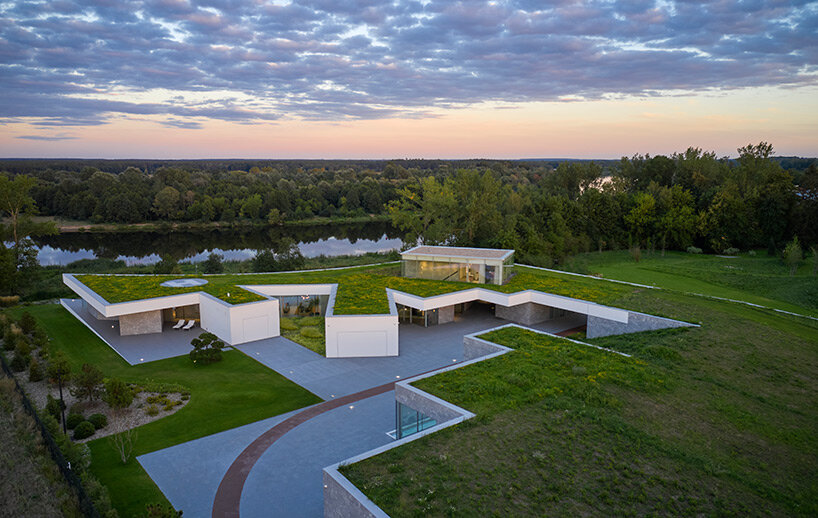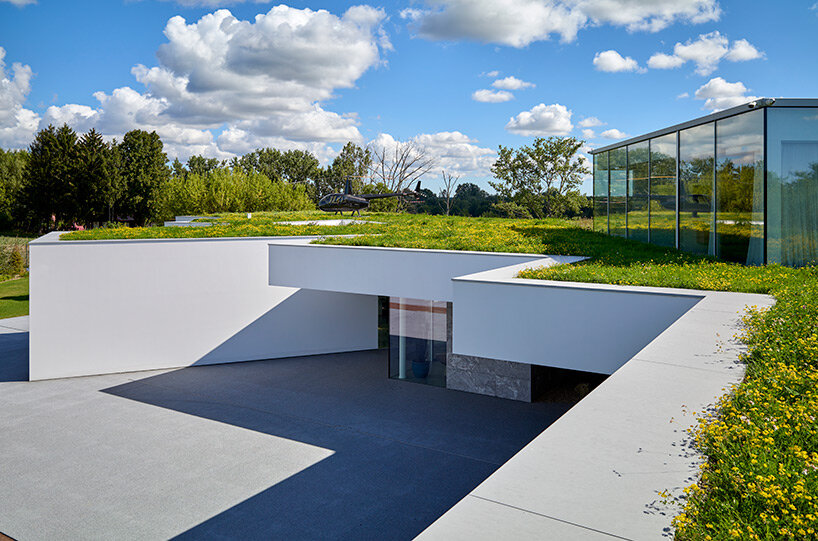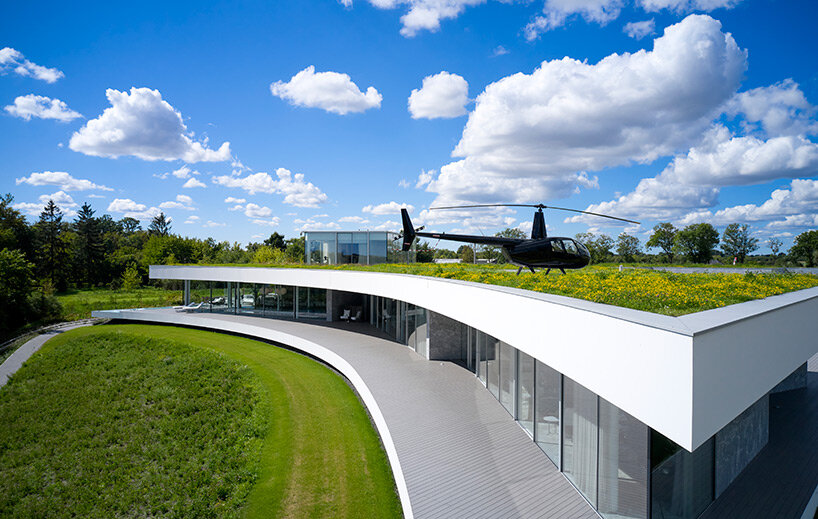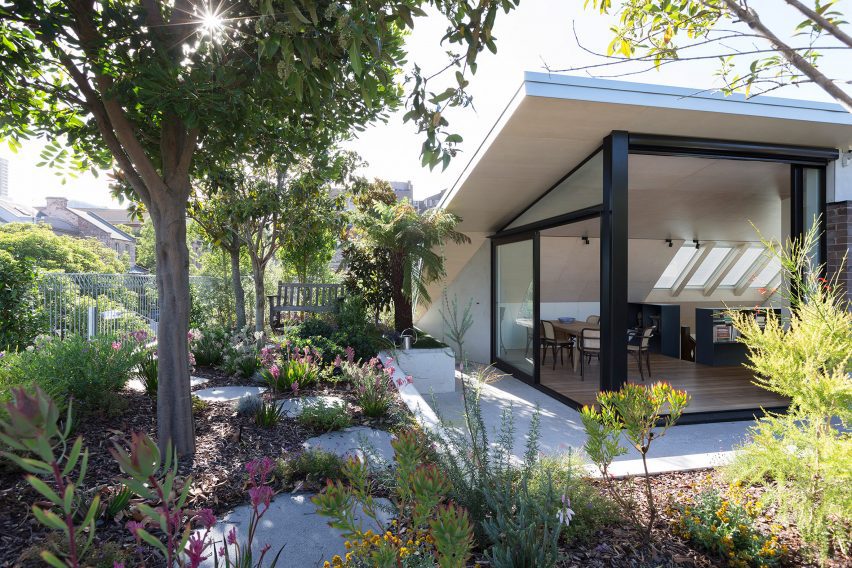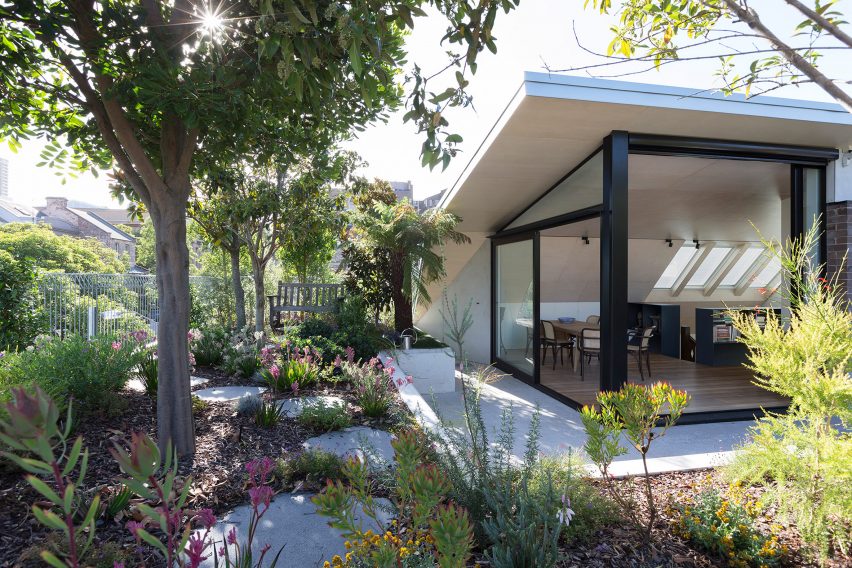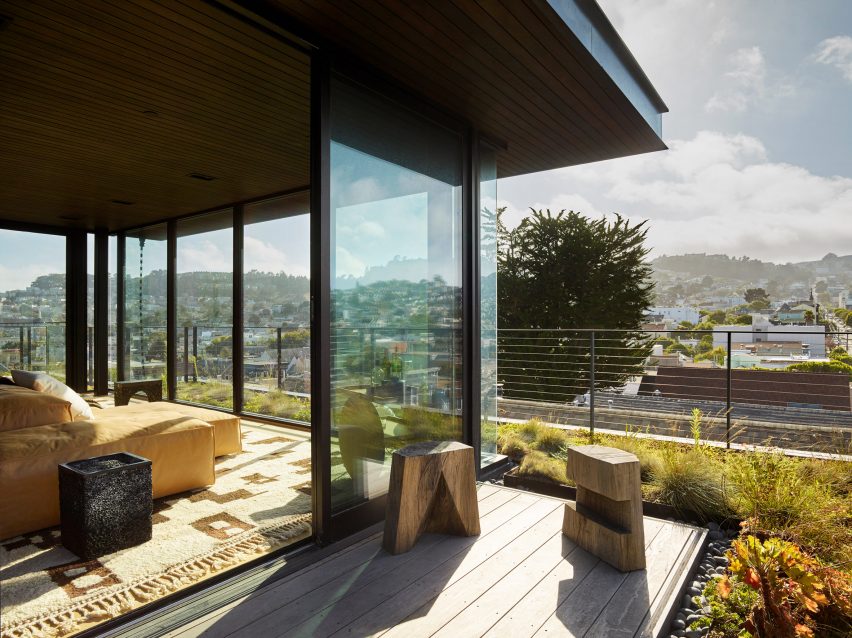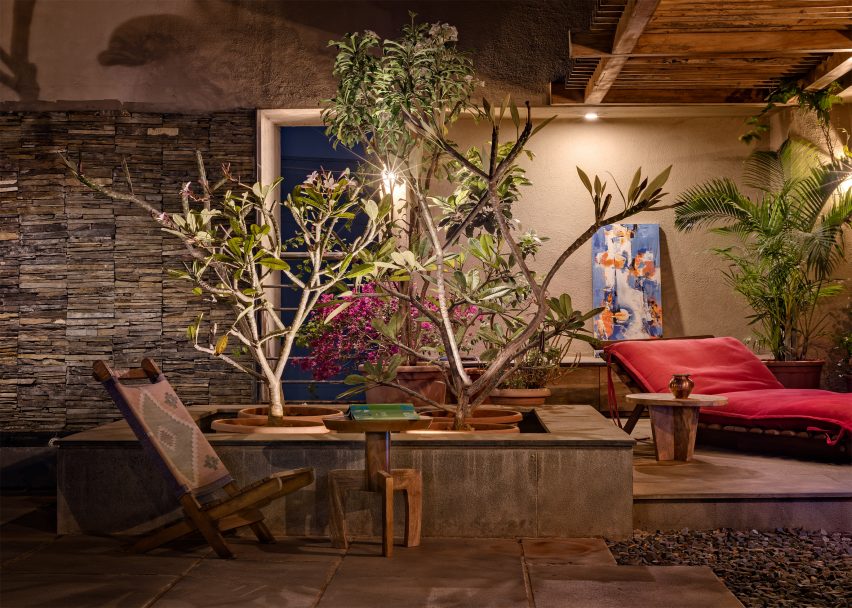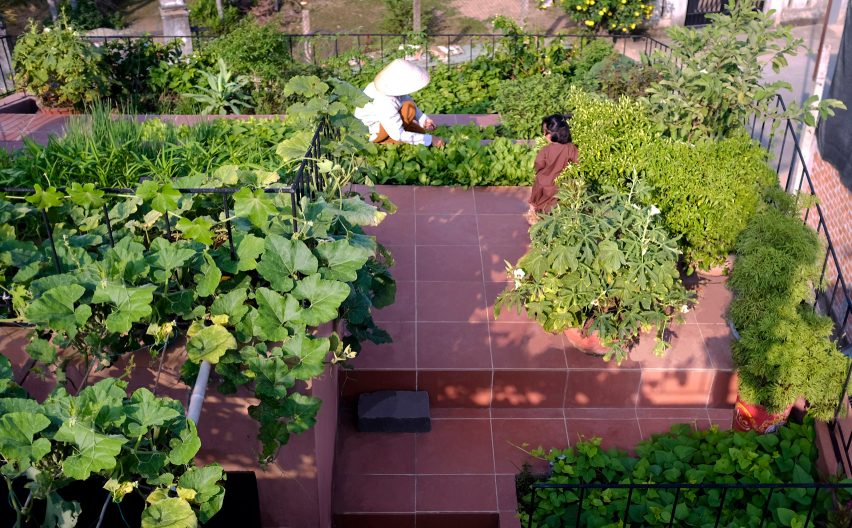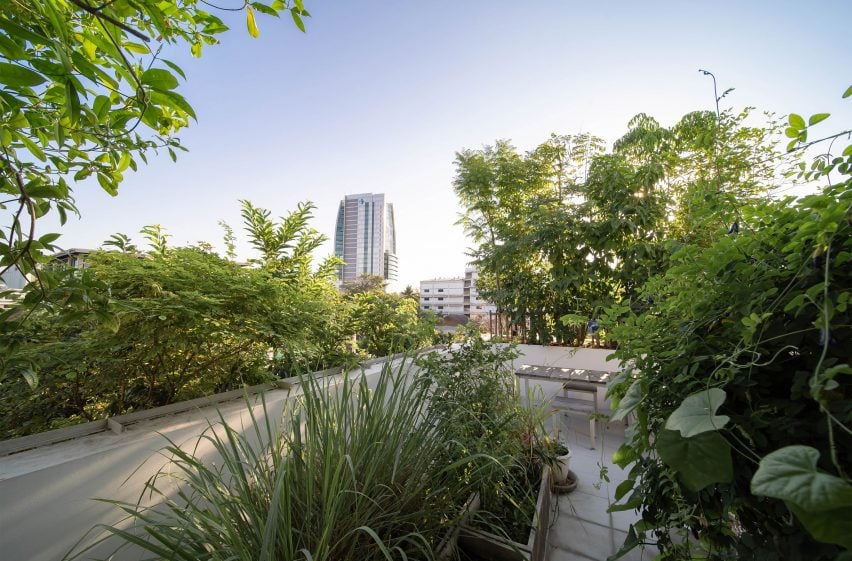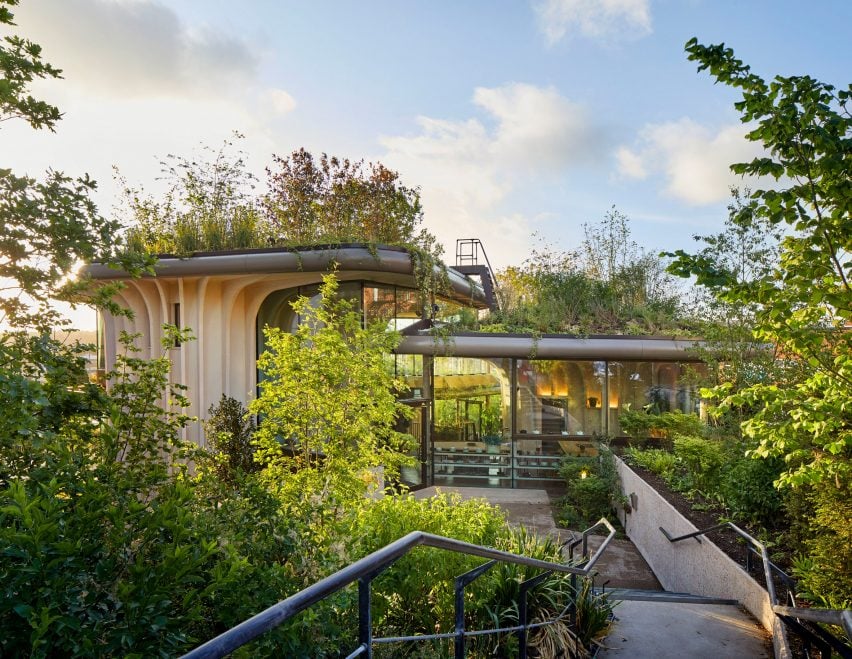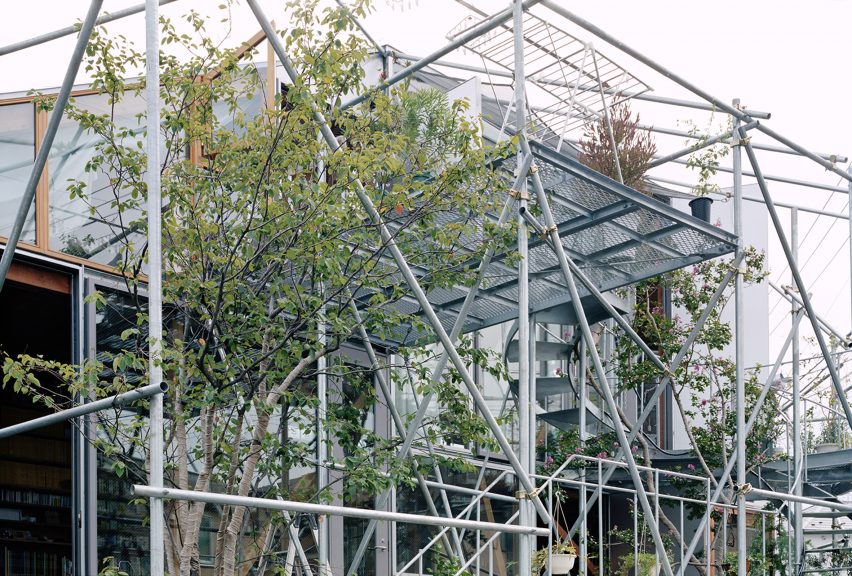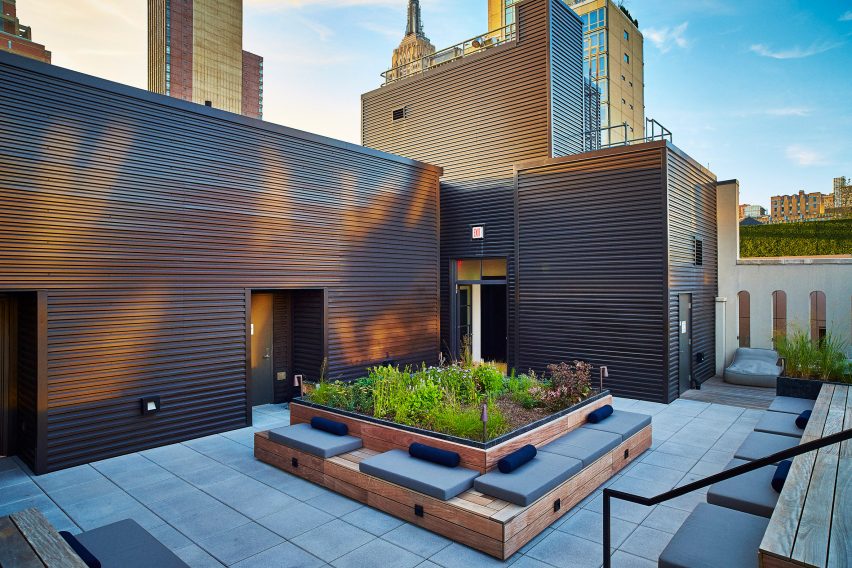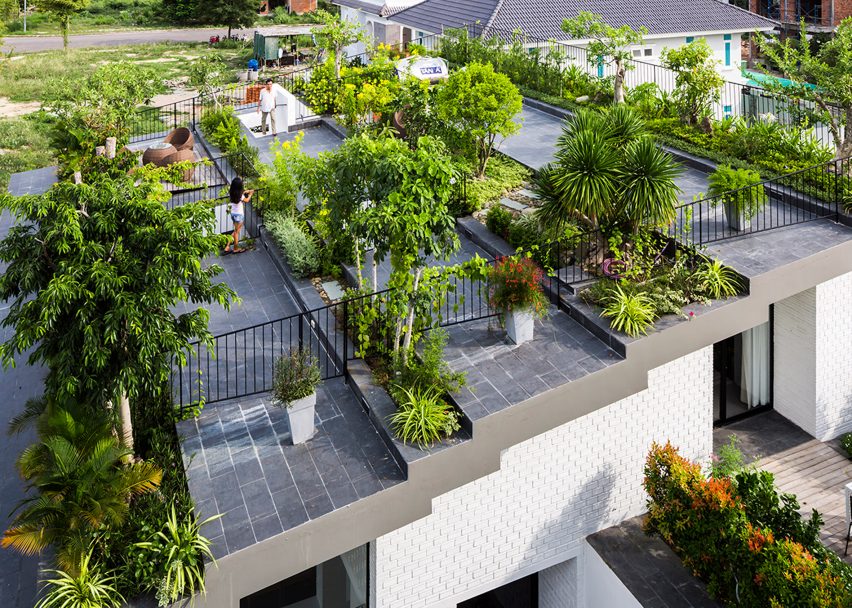stilt studios’ prefab treehouse complex treads lightly on the lush landscape of bali
treehouse studio by stilts studio
Treehouse Studio is Stilt Studio’s latest hospitality addition in Bali, Indonesia. Tucked away in the coastal village of Canggu, the elevated treehouse complex overlooks a vast landscape of rice fields, connecting travelers with the natural surroundings while also providing a memorable design experience with a unique indoor-outdoor living concept. The project is built as part of an ensemble of four prefabricated buildings on a site of 745 sqm, and is designed with the intent to create an elevated hospitality and retreat space, that becomes a sanctuary outside of the constraints of daily life.
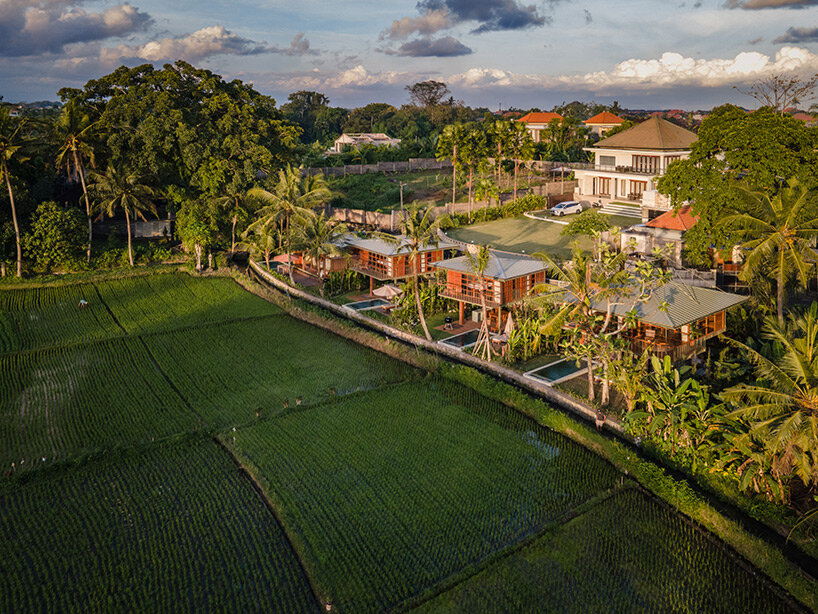
the elevated treehouse complex overlooks a vast landscape of rice fields | all images courtesy of Indra Wiras
a refuge amidst Bali’s lush surroundings
The Treehouse Studio is designed as a refuge amidst Bali’s lush surroundings, an ideal place to pause, retreat and relax. In keeping with Stilt Studios’ ethos ‘treading lightly on earth’, the architects used prefabricated building elements, relying on a conscious choice of materials from responsible sources, and using as much wood as possible to minimize the carbon footprint of the project.
The outdoor patio of the complex opens to a vast view of rice fields, providing striking visuals while creating intimacy in the natural landscape. ‘Thoughtfully positioned for unobstructed views of the glorious western sunsets, the iconic Treehouse Studio reimagines the idea of a two-story indoor-outdoor living concept, allowing for two contrasting experiences for the guests,’ mentions Therresa Shannen Budihardjo, Architectural Design Lead at Stilt Studios (find more here). When guests arrive at the treehouse, they are invited to descend and relax in a private plunge pool, stretch out on a terrace furnished with comfortable sun loungers, or gather around the dining table. They slowly ascend a spiral staircase into the treehouse and enter the warm, wooden interior, complemented by bright colors and houseplants.
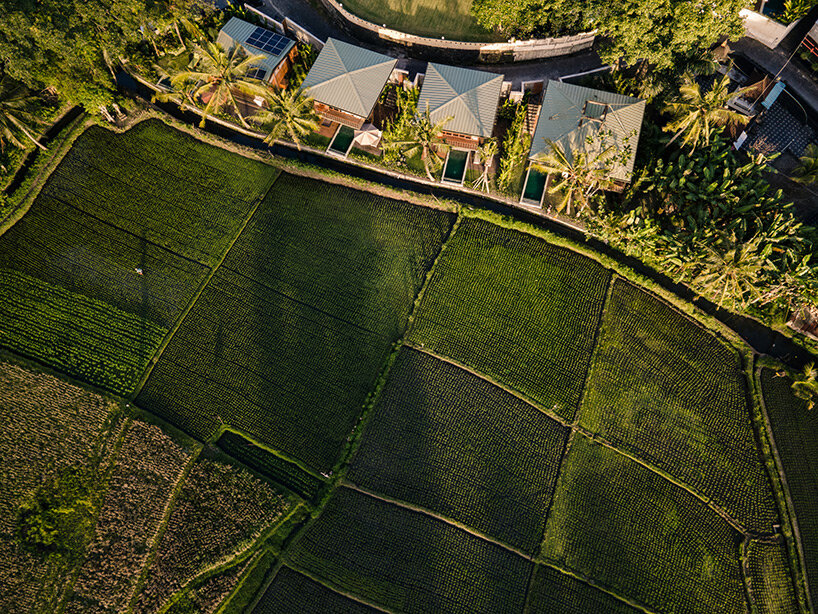
the Treehouse Studio is tucked away in the lush landscape of the Canggu village
non-specific, versatile living environment
In the living room above, large sliding glass doors open the interior to a large wooden balcony that extends the horizon into the natural surroundings. The 6×6 interior space extends to a 9 sqm balcony and offers a total of 45 sqm of living space. The open layout of the studio divides the main programs into two floors: sleeping, living, and bathing upstairs, dining, lounging, and swimming downstairs. The plans and drawing set can also be purchased from the designers to be built anywhere in the world.
With a nod to Japanese sensibilities and Balinese culture, the interior is designed to inspire guests and provide a space for contemplation and leisure. The furniture was carefully designed to make efficient use of the limited space. The L-Sofa, the centerpiece of the space, is designed for multiple functions, including lounging, storage, recharging and working.
‘For the interior of the upper level, we designed a non-specific, versatile environment that encourages a variety of small-space interactions,’ explains Cokorda G. B. Suryanata, Product Design Lead at Stilt Studios.
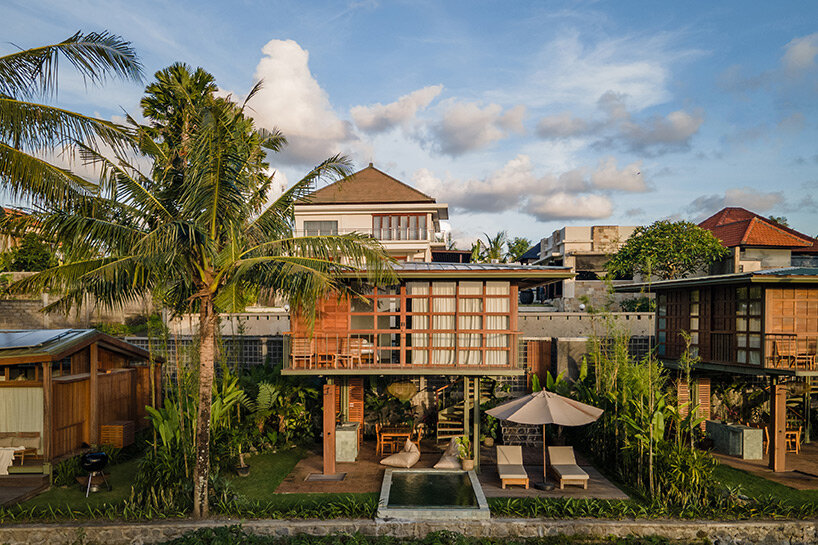
the prefabricated structures are elevated above the 745 sqm site
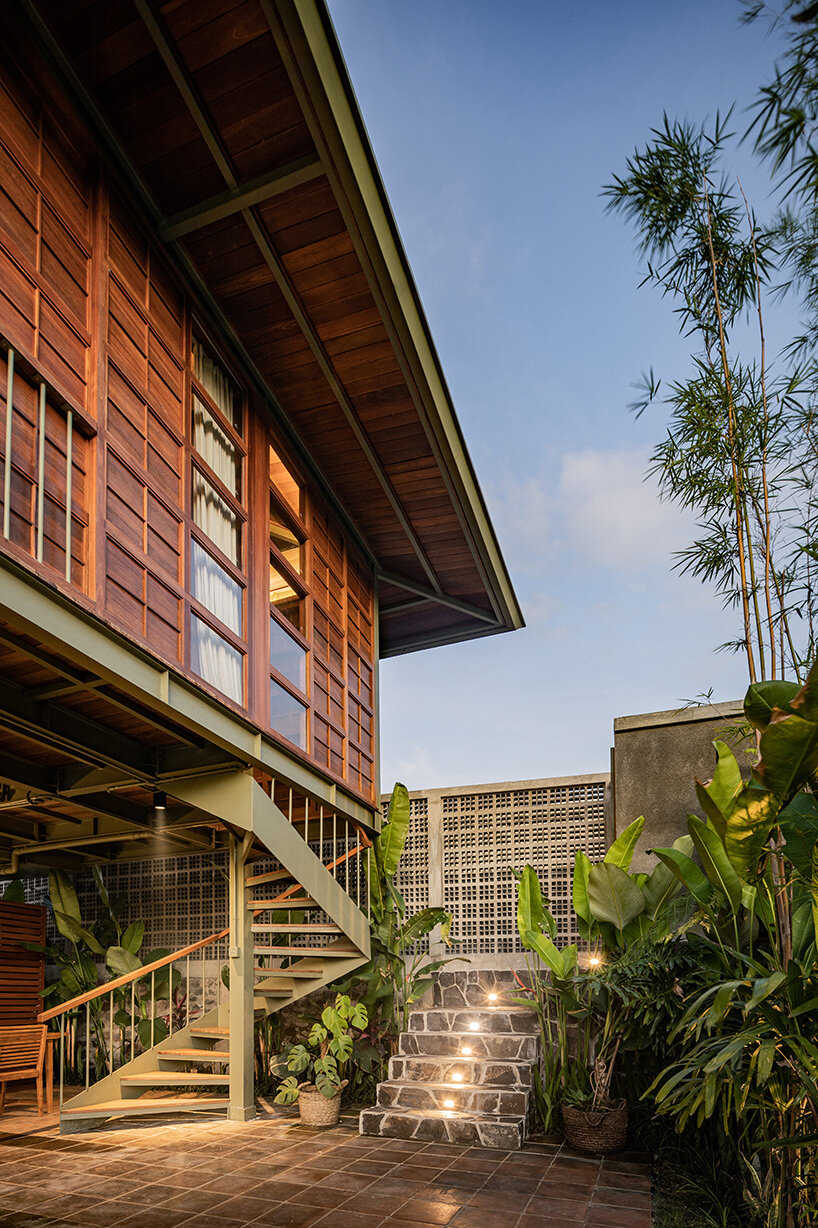
the architects used prefab building elements, relying on a conscious choice of materials from responsible sources
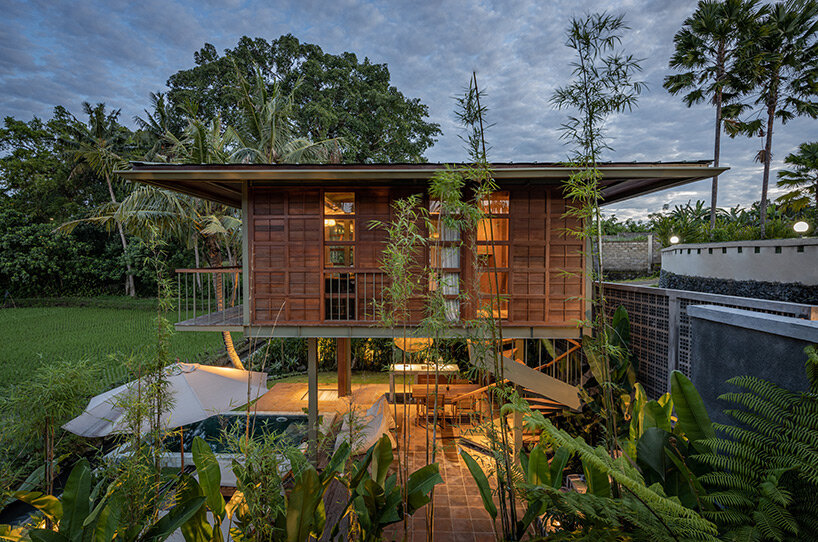
the structure treads lightly on the earth, following Stilts Studios’ ethos

